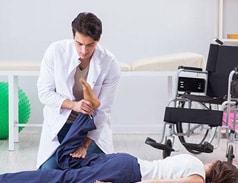Is surgery the best option for shoulder pain – what you should know. The answer is surprising.
I’m going to explain some research to answer this question and let you know what you should do if you have shoulder pain caused by subacromial impingement.
There has been a lot of interest over the last few years with regards to how we should treat shoulder pain classified as subacromial impingement syndrome. This syndrome occurs when the space that the rotator cuff tendons and the subacromial bursa occupy becomes compromised, resulting in pain when the arm is elevated, mostly through the sideways (abduction) plane of movement. There can be a variety of things that cause this reduction in space – usually swelling of the bursa (bursitis), swelling or thickening of the tendons (tendinopathy) and in some cases the bony roof of the space thickens (due to arthritis, spurring, calcification of ligaments).
In 2017 a study was conducted where 313 patients were allocated to either a sub-acromial decompression group, sham surgery group, or to a no treatment group1. Only the surgery group had physiotherapy exercise intervention following their surgery. All patients had to have at least 3 months of shoulder pain with at least 1 cortisone injection, 3 months of exercise intervention and full rotator cuff tears were excluded. At 6 months and 12 months all three groups showed improvement and there was no clinically significant differences between any of the groups. This implies that surgery may not be the desired approach for these patients. To take it further – this questions the traditional idea of mechanical/structural sources being the cause of this type of shoulder pain. Of note, there was no comparison to a physio only treatment group.
In 2018 a study looked at 2 different exercises protocols for treating this same problem – rotator cuff tendinopathies3. The main difference between the protocols was whether the patients exercised into pain or pain-free. They found that there was no difference in the outcomes of the patients after 4 weeks of the exercise program and both groups had successful outcomes for pain and function. This means that the age old adage of “hurt=harm” is not true for rotator cuff rehabilitation. That is, it is ok for patients to feel some acceptable level of discomfort during their exercises.
Recently surgical treatment has been compared to physiotherapy intervention for tendinopathies. The authors found that physiotherapy for shoulder tendinopathy was as effective as surgery in patients followed for 1 year2. The physiotherapy intervention included a progressive tendon loading program for 12 months.
So – what should you do if you have a tendinopathy causing subacromial impingement (but no full thickness tears)?
Physiotherapy with a slow progressive tendon loading program for 12 months is the best approach and in the majority of people will result in an excellent outcome. Only after this time should surgery be considered.
If you want to get started on a tendon loading program, click on the link and you can download our guide. We recommend you book an assessment with one of physiotherapists to have your shoulder problem correctly diagnosed before starting any exercise program.
- Beard D, Rees J, Cook J et al (2017). Arthroscopic subacromial decompression for subacromial shoulder pain (CSAW): a multicentre, pragmatic, parallel group, placebo controlled, three-group, randomised surgical trial. The Lancet. DOI 10.1016/S0140-6736(17)32457-1.
- Challoumas D, Clifford C, Kirwan P and Millar N (2019) How does surgery compare to sham surgery or physiotherapy as a treatment for tendinopathy? A systematic review of randomised trials. BMJ Open Sport & Exercise Medicine, 5(1), p.e000528
- Vallés-carrascosa E, Gallego-izquierdo T, Jiménez-rejano JJ, et al. (2018) Pain, motion and function comparison of two exercise protocols for the rotator cuff and scapular stabilizers in patients with subacromial syndrome. J Hand Ther, 31(2), 227-237.
Miami Physio : 9534 4111
Lakelands Physio: 9542 9999

